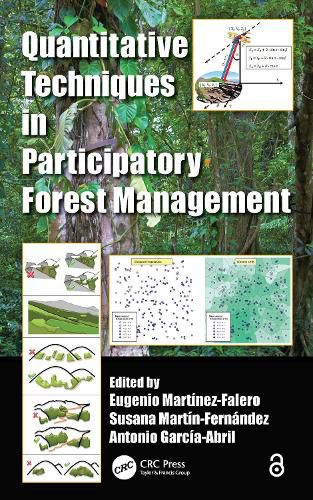Readings Newsletter
Become a Readings Member to make your shopping experience even easier.
Sign in or sign up for free!
You’re not far away from qualifying for FREE standard shipping within Australia
You’ve qualified for FREE standard shipping within Australia
The cart is loading…






Forest management has evolved from a mercantilist view to a multi-functional one that integrates economic, social, and ecological aspects. However, the issue of sustainability is not yet resolved. Quantitative Techniques in Participatory Forest Management brings together global research in three areas of application: inventory of the forest variables that determine the main environmental indices, description and design of new environmental indices, and the application of sustainability indices for regional implementations.
The book outlines a public participatory process to assess sustainability in forest management. It explores a new approach that links human and natural systems, reconsiders our interdependence with the diversity of life, and recognizes our role in a unique and complex system. The book also identifies quantitative indices that provide a vast amount of information on soil, landscape, and ecological functioning. It highlights the importance of these indices for public information programs on participatory processes and provides an operating procedure to identify the degree of convergence in the utility of multiple evaluators.
The last chapter describes a downloadable computer application that integrates the techniques explained in the book. Users accessing the application are offered a map representing their preferred forest management plan in the study zone. They are also given a map with the results of their corresponding community of evaluators, including the numerical and qualitative data for both. The system stores a record of the visit, including the visitor’s profile and responses, to progress towards the joint forest management plan.
The quantitative techniques highlighted in this book create the basis for the development of scientific methodologies of participatory sustainable forest management. It details the methodology for the design of a forest management plan that best suits a specific preference system.
$9.00 standard shipping within Australia
FREE standard shipping within Australia for orders over $100.00
Express & International shipping calculated at checkout
Forest management has evolved from a mercantilist view to a multi-functional one that integrates economic, social, and ecological aspects. However, the issue of sustainability is not yet resolved. Quantitative Techniques in Participatory Forest Management brings together global research in three areas of application: inventory of the forest variables that determine the main environmental indices, description and design of new environmental indices, and the application of sustainability indices for regional implementations.
The book outlines a public participatory process to assess sustainability in forest management. It explores a new approach that links human and natural systems, reconsiders our interdependence with the diversity of life, and recognizes our role in a unique and complex system. The book also identifies quantitative indices that provide a vast amount of information on soil, landscape, and ecological functioning. It highlights the importance of these indices for public information programs on participatory processes and provides an operating procedure to identify the degree of convergence in the utility of multiple evaluators.
The last chapter describes a downloadable computer application that integrates the techniques explained in the book. Users accessing the application are offered a map representing their preferred forest management plan in the study zone. They are also given a map with the results of their corresponding community of evaluators, including the numerical and qualitative data for both. The system stores a record of the visit, including the visitor’s profile and responses, to progress towards the joint forest management plan.
The quantitative techniques highlighted in this book create the basis for the development of scientific methodologies of participatory sustainable forest management. It details the methodology for the design of a forest management plan that best suits a specific preference system.